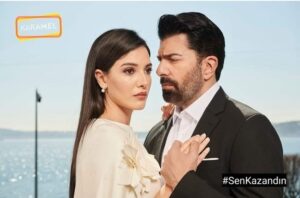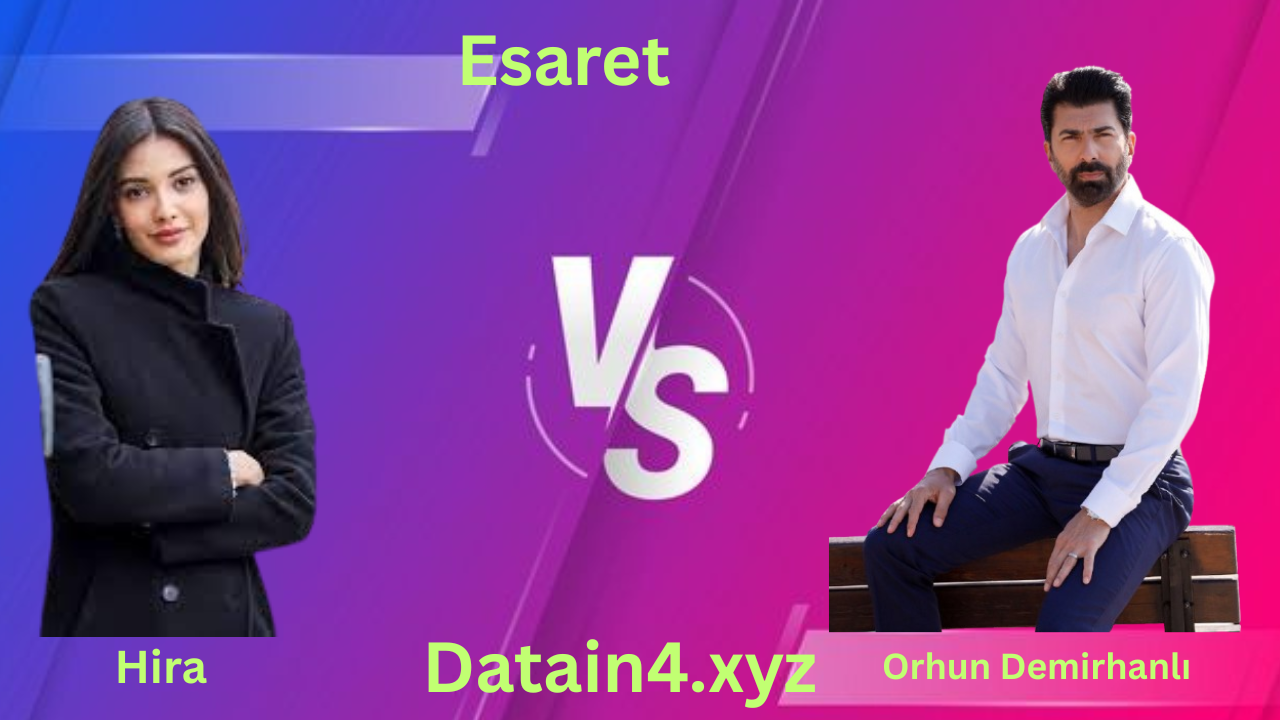Esaret Character Analysis of Hira and Orhun Demirhanlı
Esaret Character Analysis of Hira and Orhun Demirhanlı Turkish dramas are famous worldwide for their passionate love stories, intense family conflicts, and deep explorations of tradition, justice, and human emotion. Among the many recent successes, Esaret (meaning Captivity in English) stands out for its unique blend of romance, revenge, and redemption.
At the very heart of the story are Hira and Orhun Demirhanlı—two characters whose contrasting worlds collide in ways that challenge both their beliefs and their emotions. Their journey takes the audience through betrayal, guilt, justice, love, and ultimately transformation.
In this analysis, we will explore their personalities, emotional depth, relationships, and symbolic significance in Esaret.

1. Introduction to Hira
Hira is the female protagonist of Esaret, a character who captures the hearts of the audience with her innocence, strength, and resilience. From her very first appearance, Hira becomes the symbol of a woman unjustly caught in the chains of fate.
Hira’s Personality Traits
-
Innocent and Pure-Hearted: Hira is depicted as someone who has suffered greatly, yet her heart has not been corrupted by bitterness. Despite being accused of crimes she did not commit, she maintains her dignity.
-
Strong in Silence: Much like other memorable Turkish drama heroines, Hira’s strength lies not in loud rebellion but in endurance. She has an inner power that allows her to survive emotional storms.
-
Compassionate: Even towards those who mistrust her or treat her unfairly, Hira shows kindness and understanding. This compassion eventually wins hearts.
-
Resilient Survivor: Hira’s life is marked by pain, but she transforms suffering into resilience. Rather than becoming a victim, she becomes a symbol of perseverance.
Hira’s Role in the Story
Hira enters Esaret as the central figure of injustice. She is accused of being responsible for the death of Orhun’s twin sister, a tragedy that throws her into captivity. While initially portrayed as powerless, Hira’s quiet resistance and truth slowly reshape her destiny.
For the audience, Hira represents the suffering of countless women whose voices are silenced by false accusations or oppressive circumstances. She is not only a character but a metaphor for resilience in the face of injustice.
2. Introduction to Orhun Demirhanlı
Orhun Demirhanlı, the male protagonist, is the heir to the wealthy and powerful Demirhanlı family. He is a man shaped by strength, discipline, and responsibility, but also wounded by grief and vengeance.
Orhun’s Personality Traits
-
Authoritative and Proud: Orhun carries himself as a man of authority. As the eldest son of the Demirhanlı family, he is expected to lead, protect, and uphold the family’s honor.
-
Driven by Justice and Revenge: Orhun’s initial actions towards Hira are fueled by a desire to punish those responsible for his sister’s death. His sense of justice, however, sometimes blurs into vengeance.
-
Protective by Nature: Despite his hardness, Orhun is not heartless. Once he begins to see Hira’s truth and innocence, his protective instincts surface, and he becomes her shield against further injustice.
-
Conflicted Soul: Orhun is torn between his duty to family honor and his growing love for Hira. This conflict defines much of his character arc.
Orhun’s Role in the Story
Orhun represents the voice of authority, justice, and tradition in Esaret. His treatment of Hira at first shows the dangers of blind judgment, but his gradual transformation illustrates the power of love and truth. He begins as Hira’s captor but evolves into her protector, lover, and eventual partner.
3. The Relationship Between Hira and Orhun
The emotional center of Esaret lies in the evolving relationship between Hira and Orhun. What begins as hostility and mistrust slowly transforms into one of the most powerful love stories in Turkish television.
Phase 1: Captivity and Hatred
When Orhun first brings Hira into his home as a form of punishment, their relationship is filled with tension. He sees her as a murderer, while she sees him as an oppressor. This dynamic reflects the title Esaret itself—captivity, not just physical but emotional.
Phase 2: Doubt and Discovery
As Orhun observes Hira’s behavior, her innocence and kindness begin to shake his assumptions. He notices her compassion, her lack of malice, and her suffering.
Phase 3: Protection and Trust
Once Orhun realizes Hira’s true nature, his attitude shifts. He begins to defend her against others in the household who despise her presence. Trust grows between them, and with it, an undeniable emotional connection.
Phase 4: Love and Redemption
Eventually, their relationship blossoms into love—a love born not from fairy-tale beginnings but from pain, endurance, and transformation. Hira redeems Orhun’s anger with her patience, while Orhun redeems Hira’s suffering with his protection.
Their bond becomes a symbol of how love can grow in the unlikeliest of places, even in the shadow of captivity.

4. Symbolism of Their Characters
Both Hira and Orhun carry symbolic weight in the drama.
-
Hira as Innocence and Endurance: She represents the unjustly accused, the silenced, and the oppressed who survive through patience and integrity.
-
Orhun as Justice and Transformation: He represents authority blinded by vengeance but later transformed by love and truth.
-
Their Love as Liberation: Together, they symbolize the breaking of chains—emotional, social, and moral. Their story shows that love itself can be the ultimate form of freedom.
5. Key Turning Points in Their Journey
-
Orhun’s Sister’s Death: The tragedy that ignites the conflict. Believing Hira guilty, Orhun seeks vengeance.
-
Hira’s Captivity: Orhun brings Hira into his mansion, setting the stage for their evolving relationship.
-
First Signs of Doubt: Orhun begins to see that Hira’s behavior does not align with that of a murderer.
-
Defending Hira: When others attack Hira, Orhun starts protecting her, signaling a major shift.
-
Love Realized: Their love blossoms against all odds, proving that even the darkest beginnings can lead to light.
6. Emotional Impact on the Audience
The pairing of Hira and Orhun has deeply resonated with audiences worldwide. Viewers are drawn to their slow-burn romance, the intensity of their emotions, and the way their relationship challenges ideas of justice, love, and forgiveness.
Audiences cry with Hira’s silent pain, feel Orhun’s burning rage, and celebrate their eventual union. The relationship captivates because it is built not on superficial attraction but on transformation, healing, and redemption.
7. Lessons from Hira and Orhun
-
Do not judge without truth: Orhun’s initial mistake teaches the danger of assuming guilt without evidence.
-
Endurance can transform fate: Hira shows how patience and integrity can ultimately reveal the truth.
-
Love is a form of liberation: Their love breaks the chains of pain, vengeance, and false judgment.
-
Both men and women are captives: Orhun is a captive of anger and duty, while Hira is a captive of injustice. Their journey shows that captivity comes in many forms.
Conclusion
The Turkish drama Esaret is more than just a love story—it is a tale of captivity, justice, and redemption. At its center, Hira and Orhun Demirhanlı shine as two unforgettable characters whose lives are forever altered by fate.
Their journey reminds us that love can heal even the deepest wounds and that truth always finds a way to reveal itself.
